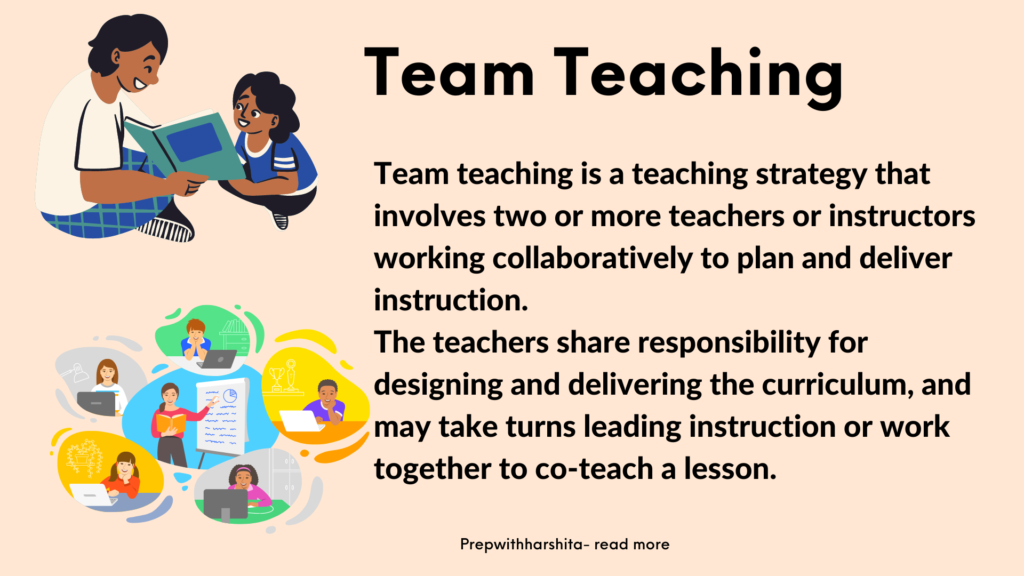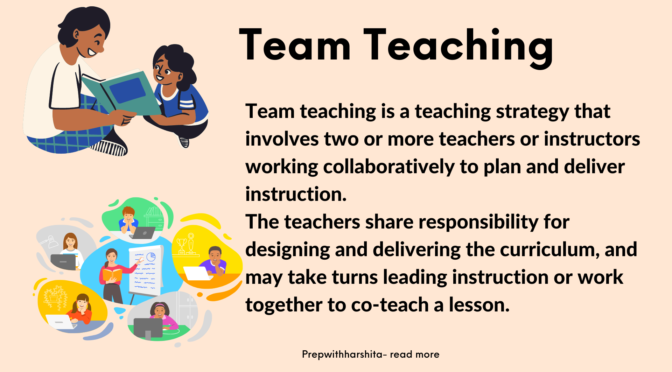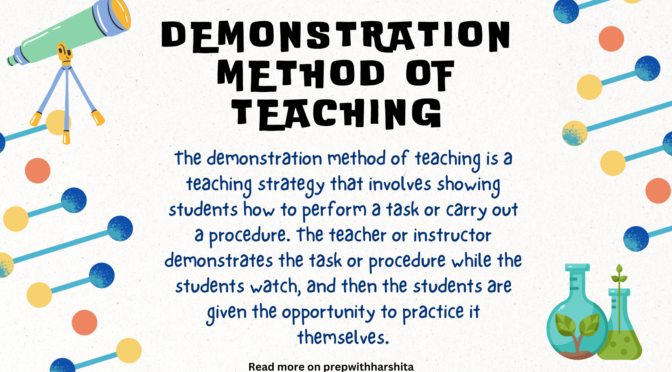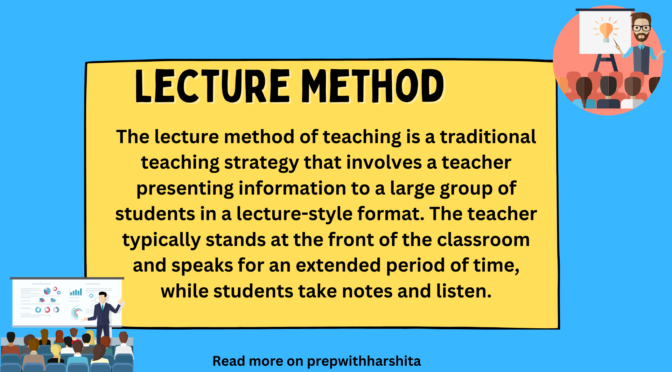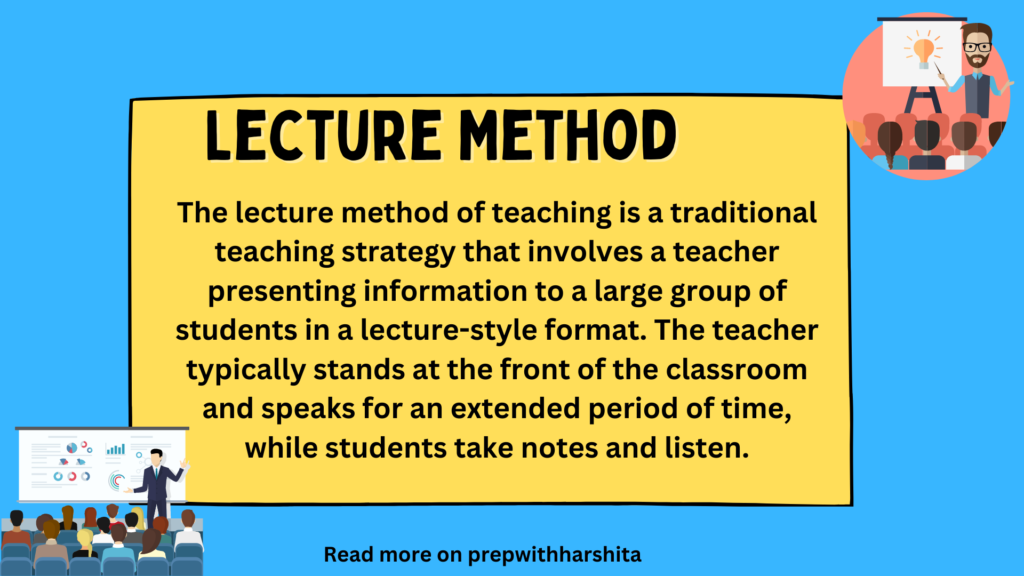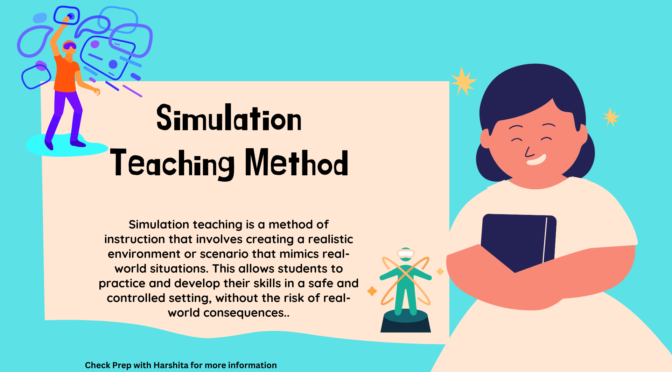Team teaching is a collaborative teaching strategy in which two or more teachers work together to plan, teach, and evaluate a course or lesson. Team teaching can involve co-teaching a class or dividing teaching responsibilities between multiple teachers.
Some key features of team teaching include:
- Collaboration: It involves collaboration between teachers, who work together to plan and deliver instruction.
- Shared responsibility: In this, teachers share responsibility for instruction, assessment, and feedback. This can lead to more comprehensive and effective instruction.
- Diverse perspectives: It allows for the integration of diverse perspectives and expertise, which can enrich the learning experience for students.
- Increased student engagement: With multiple teachers, It can lead to increased student engagement and participation in class discussions and activities.
- Flexibility: It can be flexible and adaptable to meet the needs of different learners and teaching styles.
- More efficient use of resources: It can allow schools to make more efficient use of resources, by sharing teaching responsibilities and reducing class sizes.
Also read: Demonstration Method
Overall, this can be an effective teaching strategy, particularly for classes that require a range of expertise or involve a diverse group of learners. It can also promote collaboration among teachers and lead to more effective instruction and learning outcomes for students.
